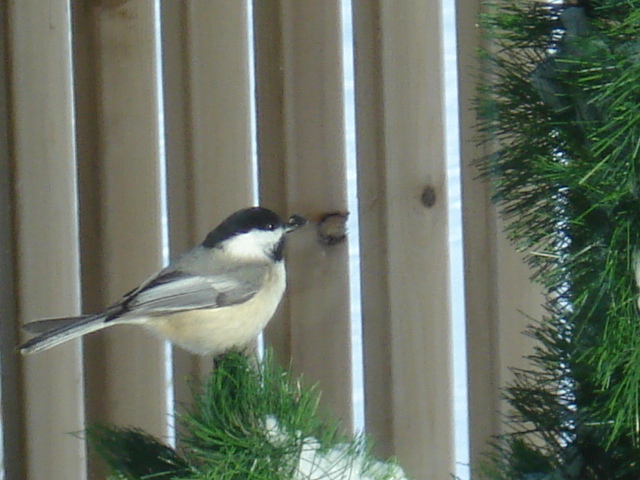
After the summer bird species have migrated south for the winter, the black-capped chickadee (Parus atricapillus) remains present around the arboretum and a year-round favorite to many birders. Their energetic and curious behaviors make them one of my favorite species to observe. I can almost always rely on them to be active during any part of the day and in the most inclement weather. They can almost always be observed at any bird feeder, including those in very urban or disturbed areas.
Black-capped chickadees are fairly easy to identify by their large heads painted with a black cap, black chin and a white stripe around their cheeks. The bird’s body has a grey spherical shape, a long narrow tail, and a small bill. It has a distinctive “chika-dee-dee-dee-dee” and “fee-bee” call that can often be heard from the surrounding trees.
Chickadees are the central component to mixed species flocks in the fall and winter; because of the way other species are able to pick up on their complex communication system. Many species, like nuthatches, warblers, and woodpeckers, follow the chickadees to gleam information about food sources and the presence of predators.
Like many species that reside in Minnesota during the winter, chickadees are well adapted to survive the harsh winters. During the night chickadees are able to drop their body temperature, conserving precious energy. Chickadees also have a remarkable memory. During the fall and winter, they cache or store seeds, each in a unique location. They can remember the location of each cache for up to a month. Caching seeds gives them food certainty when food might be scarce.